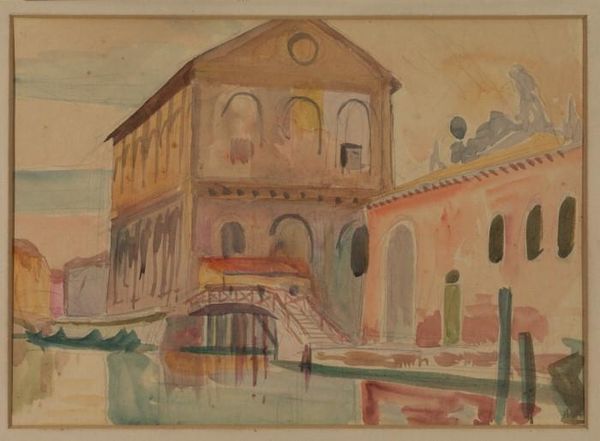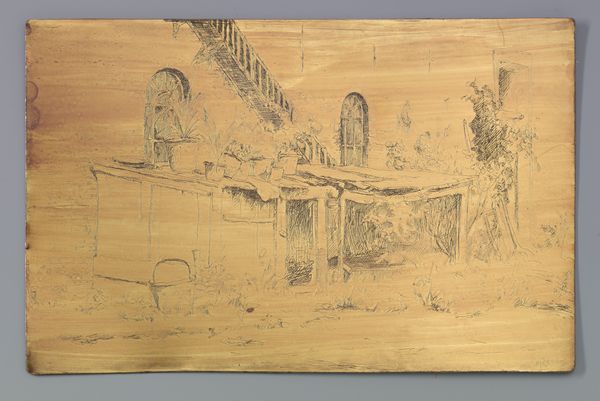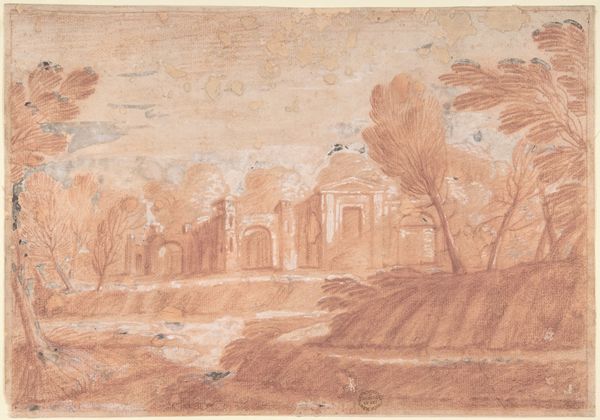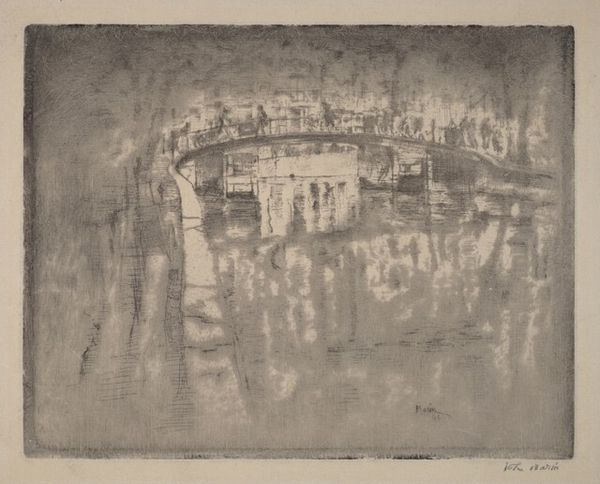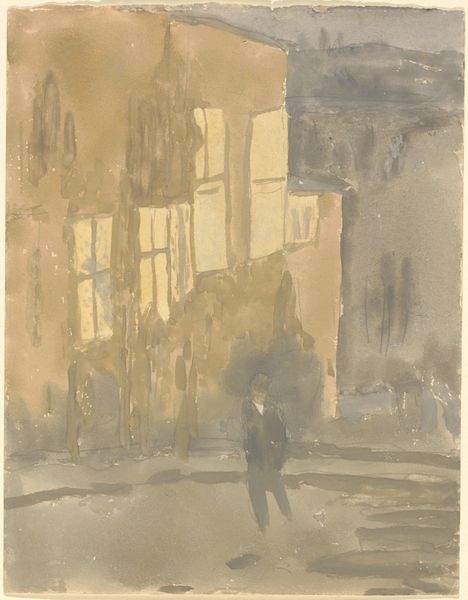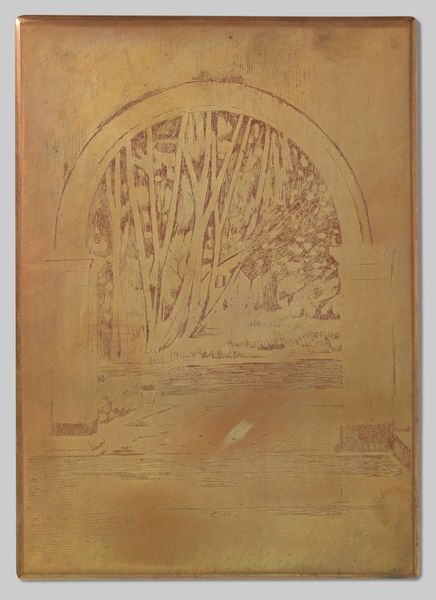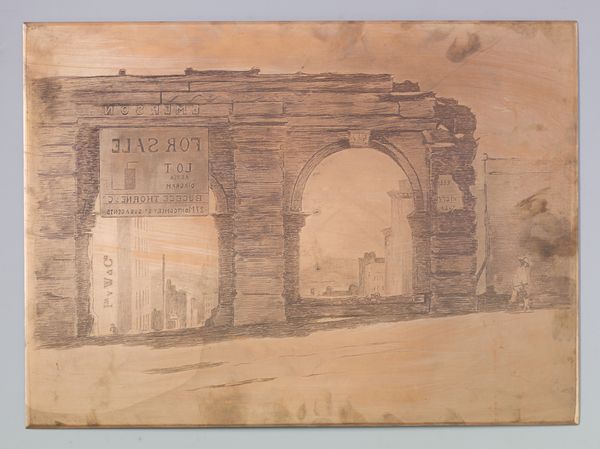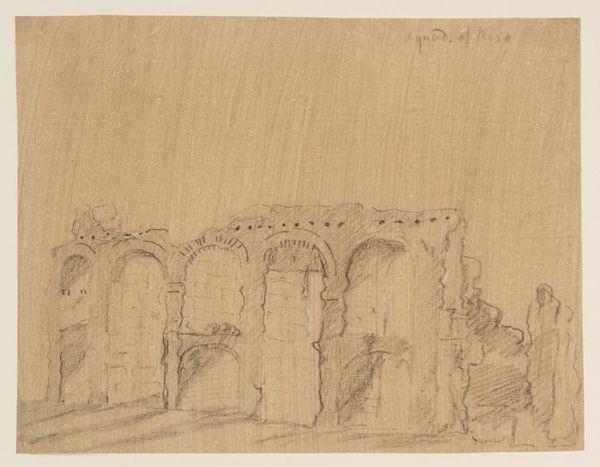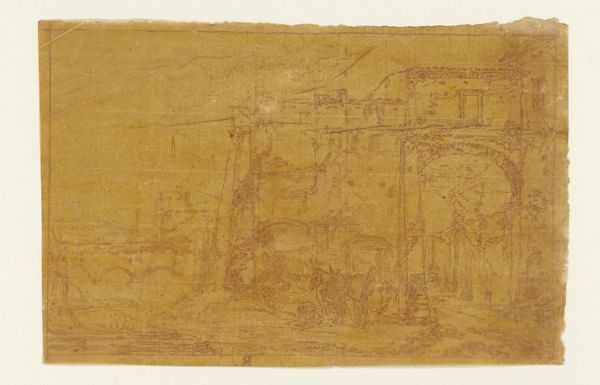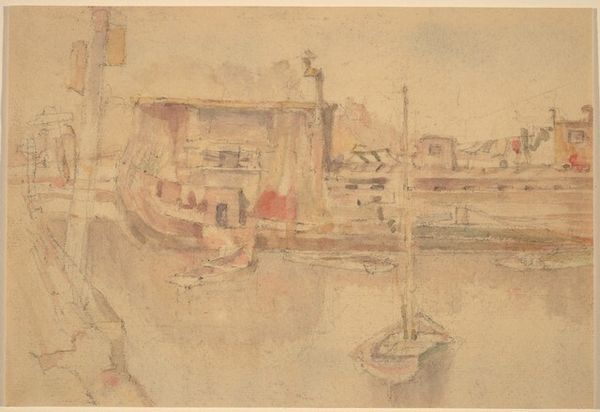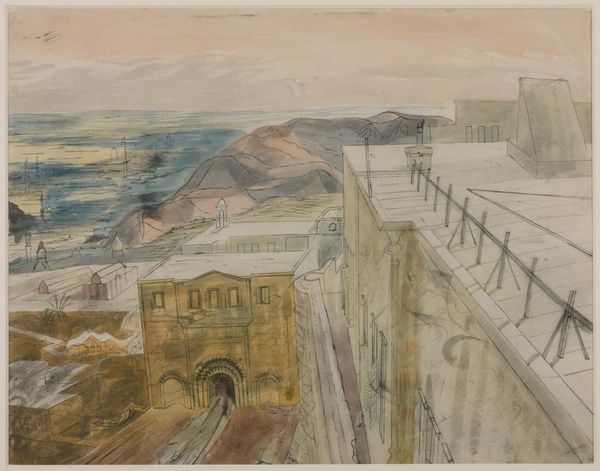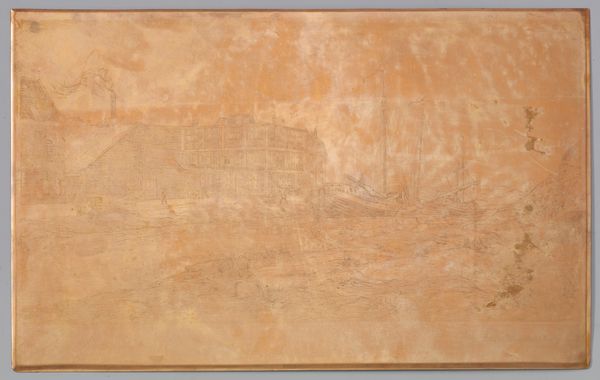
Dimensions: height 348 mm, width 410 mm
Copyright: Rijks Museum: Open Domain
Curator: Willem Witsen's "Gondel komt aanvaren in het Canal Grande, Venetië," dating from circa 1914-1919. This evocative print is made with etching on metal. Editor: It's overwhelmingly brown, almost monochromatic. And muted. Despite depicting the Grand Canal in Venice, there’s very little to suggest a vibrant scene. More somber, wouldn’t you say? Curator: Witsen often gravitated toward atmospheric studies and perhaps he was attempting to capture the city in a different light – no longer as a festive locus for tourism, but as an old maritime centre marked by a melancholy grandeur, impacted by broader European events of that period. Editor: But how conscious do you think that decision was? The period between 1914 and 1919 was, of course, a turning point in world history. I imagine his choice to depict Venice in such subdued colours has more to do with WWI-era anxieties that permeate beyond a simple Venetian backdrop. How can one make 'pretty' art amid chaos? Curator: That’s a vital point to consider. The limited color palette and etching technique create a textural depth and capture a sense of the city's aged facades and watery reflections. It’s definitely about how European political dynamics and early globalization of Venice impacted representation of that area within the art market and the aesthetic trends that grew out of this context. Editor: Absolutely. And notice how the gondola takes up a great portion of the frame and is in clear need of maintenance? One wonders if it functions as an analogy of how tourism was drastically impacted, thereby shifting the entire city's economic reality? Or perhaps, the artist intentionally makes this a metaphor of pre-war life, of lives caught in suspension... Curator: Fascinating observations. Witsen's decision to portray Venice not as a colourful spectacle, but as an elegiac reminder of a powerful city impacted by significant events allows us to reflect on Venice beyond its conventional associations of spectacle and luxury. Editor: A subtle but deeply thought-provoking piece! One could spend ages contemplating its layers of socio-historical references.
Comments
No comments
Be the first to comment and join the conversation on the ultimate creative platform.
